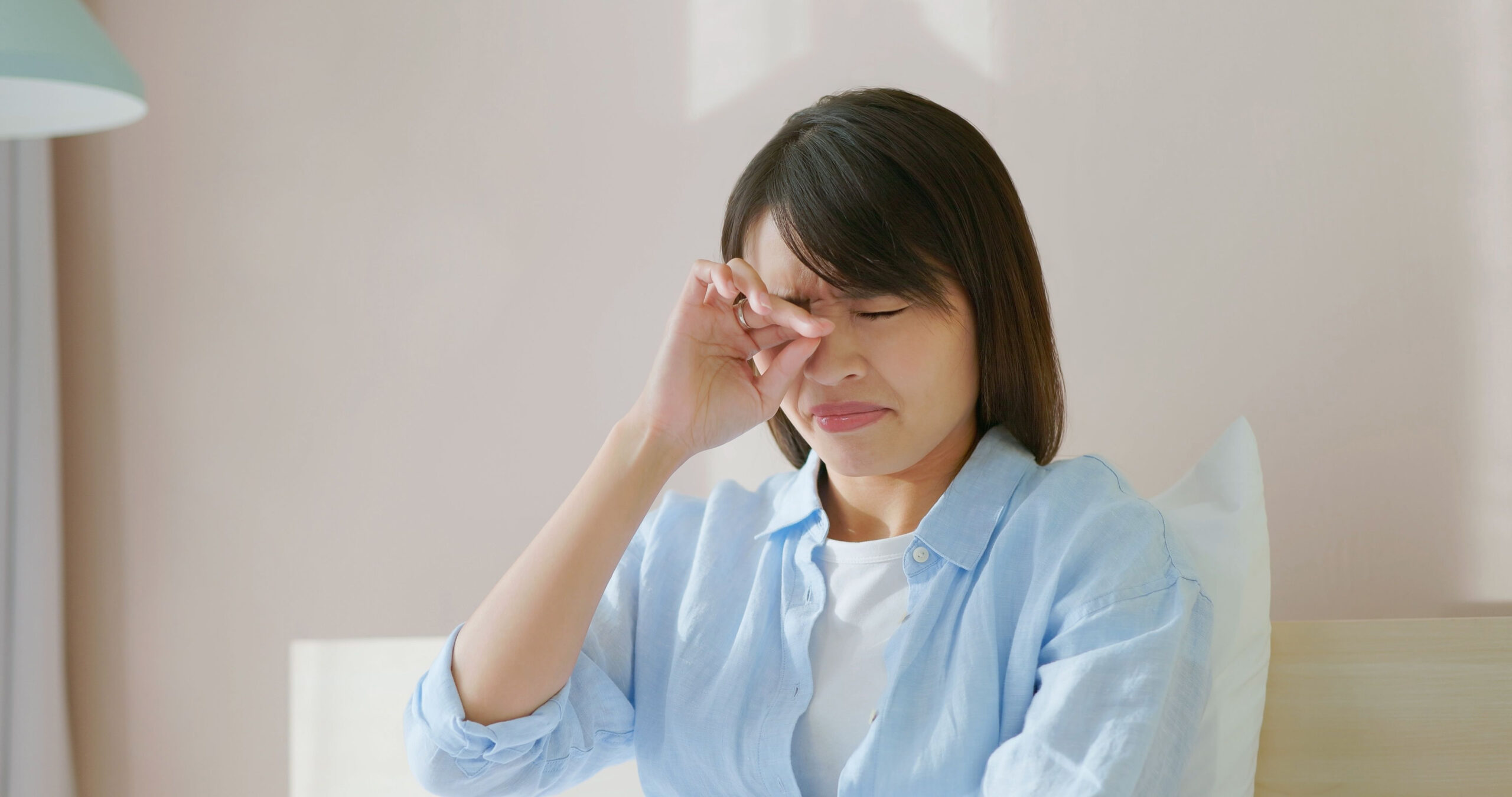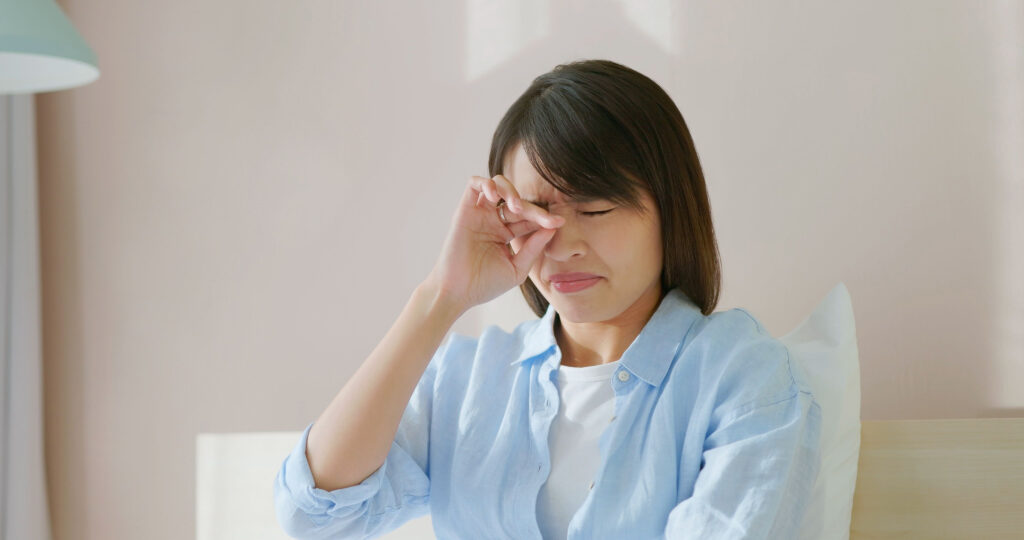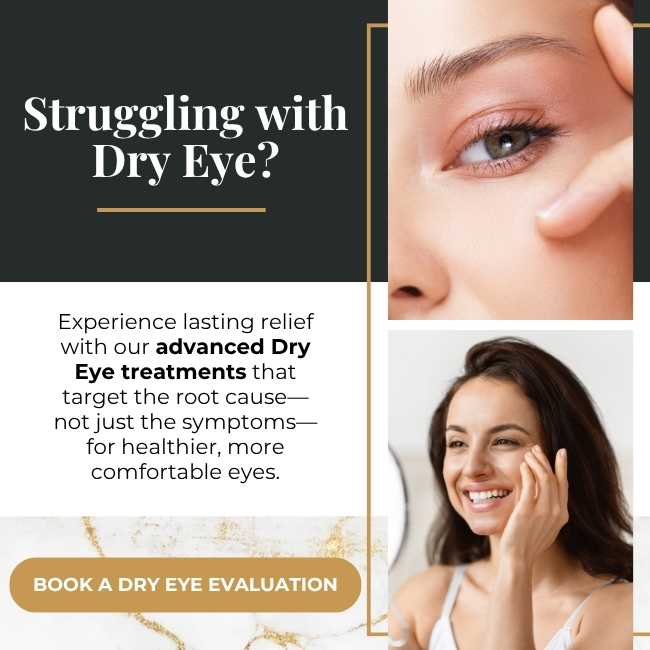There are two main types of dry eye disease: Evaporative and Aqueous Deficient dry eyes. In evaporative dry eyes, the tears you produce evaporate too quickly. In aqueous deficient dry eyes, you don’t produce enough tears. The most common type of dry eye disease is evaporative dry eyes. In evaporative dry eyes, the tears produced are missing an oil layer and therefore evaporate very quickly. The missing oil layer is a result of clogged eyelid glands called Meibomian glands. There are many triggers that bring upon dry eye symptoms.
1. Aging: As people age, tear production decreases, leading to dry eyes.
2. Environmental factors: Exposure to dry, windy, or smoky air contributes to the evaporation of tears and worsens dry eye symptoms.
3. Screen Time: Prolonged periods of screen time (computers, smartphones, tablets) reduces blink rate and leads to dry eyes. Blinking functions to spread tears that nourishes the eye.
4. Contact lens wear: Wearing contact lenses can increase the risk of dry eye due to decreased oxygen flow to the cornea and reduced tear circulation.
5. Cosmetics: Many cosmetics products contain ingredients that are irritation to the eye and trigger dry eye symptoms.
6. Medications: Medications such as antihistamines, decongestants, antidepressants, and hormone replacement therapies, can cause or worsen dry eye symptoms.
7. Medical conditions: Conditions like Sjögren’s syndrome, rheumatoid arthritis, lupus, diabetes, thyroid disorders, and rosacea are associated with dry eye disease.
8. Hormonal changes: Fluctuations in hormone levels, especially in women during pregnancy, menopause, or while taking birth control, can contribute to dry eye symptoms.
9. Allergies: Allergic reactions, especially in the eyes, can cause dryness and irritation.
10. Eyelid problems: Conditions like floppy eyelids, blepharitis (inflammation of the eyelids) or meibomian gland dysfunction (MGD) disrupt the production of moisturizing tears.
11. Eye surgeries: Surgeries such as Eyelid Lifting (Blepharoplasty) and LASIK can temporarily or permanently cause dry eye symptoms as they affect tear production and distribution.
12. Prolonged use of eye drops: Overuse of certain eye drops, like those containing preservatives, can lead to dry eye symptoms.
Think you might have dry eyes? Schedule an appointment at LUMINANCE VISION Dry Eyes & Aesthetics Spa.




